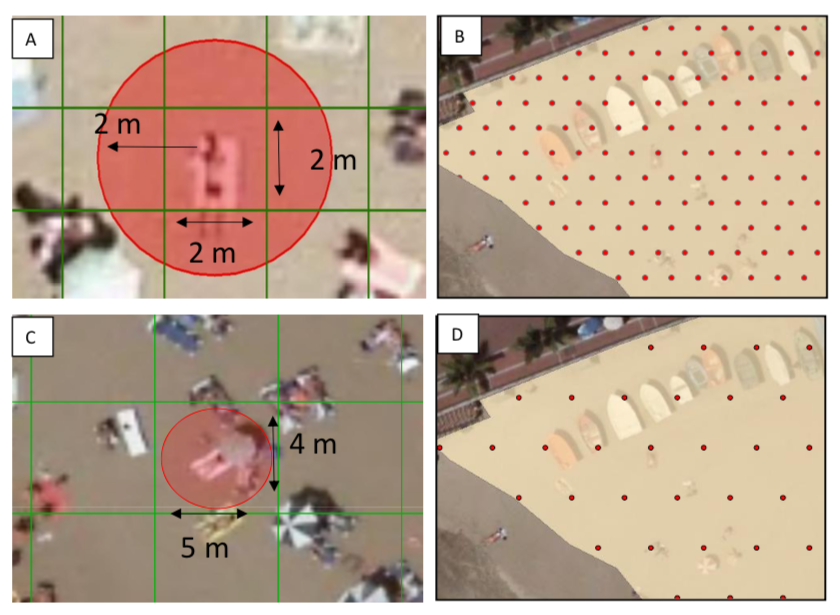Ph.D. Program in Oceanography and Global Change at the Canary Islands, Spain
Las Canteras beach in Las Palmas de Gran Canaria, is a place with a high influx of users. Estimating the tourist carrying capacity of the beach is very useful for the technicians responsible for its management. The proposed study aims to determine the capacity of Las Canteras beach, as well as its Tourist Carrying Capacity (TCC), taking into account the current circumstances arising from the health crisis caused by the global pandemic of the Covid-19 disease. In this context, the analysis of the distance between people takes on special relevance, as it constitutes a basic criterion for establishing measures to reduce the possibilities of contagion. The methodology chosen is inspired by that designed by Cifuentes (1992), which estimates the TCC taking into account the physical surface of the beach, ecological and social variables, as well as the management of the environment by public administrations. Once the three methodological filters of the TCC calculation were applied, it was observed that the decreases between the real and effective carrying capacity reduced the number of users by 58%, from 42,226 users to 16,096 users at high tide; or by 65% at mid-tide, reducing the number of users from 26,922 to 9,263 users. The spatial analysis carried out in this work leads to the conclusion that calculating the capacity of the beach with the criteria established in the current regulations does not allow the safety distance established in the same regulations to be maintained. In order to maintain an interpersonal distance of two meters between users, the minimum occupancy criterion must be at least 6 square meters per user, and for an interpersonal distance of 1.5 meters (as indicated in the regional regulations), at least 4 square meters per user are required. Consequently, it is proposed to establish larger "safety plots", in which an adequate distance between beach users is guaranteed at all times, even when they are in motion. To respect the interpersonal distance of 2 meters (according to the state standard) a safety plot of 20 square meters per user is required; and for an interpersonal distance of 1.5 meters (according to the regional standard) a safety plot of 16 square meters per user is recommended. The result of applying an occupancy criterion of 4 square meters per user, established in the current legislation and with a sea state at low tide, means a capacity of 42,226 people. However, taking into account the recommended occupancy criteria of 16 and 20 square meters per user, the capacity of Las Canteras beach would be 10,556 and 8,445 users respectively, for the same sea state. If we compare the figures obtained between the calculation of the capacity in the health crisis situation and the TCC, we can see that the effective load capacity at low tide is 16,096 users on a permanent basis. Therefore, the recommended reduction for times of pandemic would range between 34% and 48% for the most restrictive situations.




